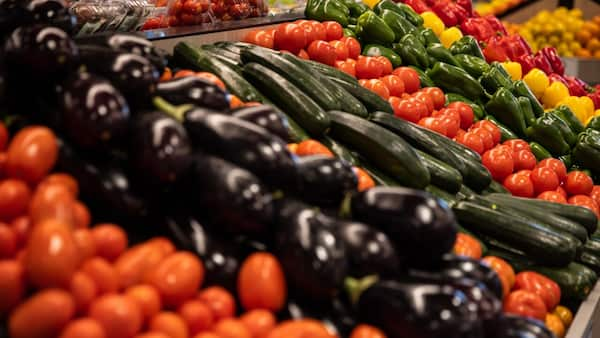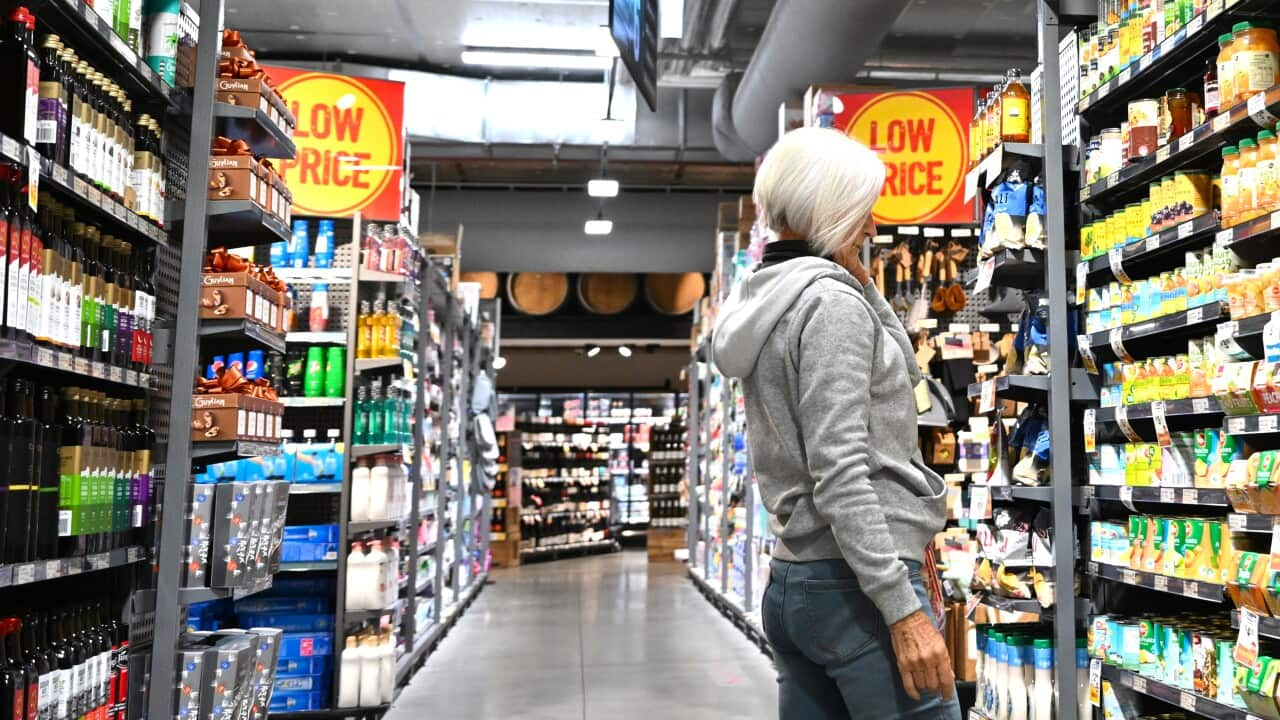Key Points
- A recent quarterly supermarket survey recommended Australians shop around for better grocery deals.
- While IGA is Australia’s most expensive supermarket, it’s also the only option for many, advocates say.
- Advocates also told SBS many people in Australia don’t have enough money to buy the food they need.
A quarterly supermarket survey has recommended Australians shop around and look for better deals as grocery prices continue to rise, but advocates say many people in Australia don’t have the access or funds to buy food they need.
The government has committed to provide Choice with $1.1 million over three years to conduct quarterly supermarket surveys, according to the consumer advocacy group.
Aldi was the cheapest supermarket to buy an average basket of 14 items, with the basket setting shoppers back $50.79 — down from $51.51 three months beforehand.
The same basket of items cost $68.37 at Woolworths — $3.44 more expensive than three months ago, while the prices of the same items at Coles came down $2.30 to $66.22 in the same period.
The most expensive supermarket was IGA, at $78.95, which advocates say is an affordability problem because, for many Australians, it’s the only option.
IGA has over 1,400 stores nationally, with a focus on regional areas. Woolworths has over 1,100, and Coles has over 850. Meanwhile, Aldi operates 595 stores in Australia, but it doesn’t have any stores in Tasmania or the Northern Territory.
Louise Giolitto is the chief executive of the Western Australian Council of Social Service (WACOSS).
She told SBS News prices could skyrocket for customers in remote areas, and it’s having a “devastating impact on families”.
“Often in many small towns, like Onslow, there’s only an IGA. The prices go even higher once you go into regional West Australia and the further north you go.”
“What we are hearing, especially from regional WA, is that food insecurity is one of the biggest problems. People are actually going hungry.
“They’re going without meals, they’re not being able to pay for medications, they’re not being able to pay their car registrations, they’re not being able to pay for their insurance.”
Groceries cost more in regional areas
The latest grocery prices report from the Northern Territory government found that in 2023, the average basket of groceries cost 26 per cent more in remote stores.
A healthy basket of goods that fits the government’s guidelines costs 40 per cent more in remote stores than supermarkets.
Choice’s report found people in Western Australia were paying on average $1 more for a basket of groceries than in other states and territories.
Giolitto said WACOSS research found the cost of groceries in the Kimberley to be over 7 per cent higher than it was in Perth.
“You’re 30 per cent more likely to experience food insecurity if you’re living in regional WA, purely because of the higher cost of living in those areas, given the extra cost of petrol and housing,” she said.
Anglicare CEO Simon Miller told SBS News that demand for charitable food services in regional areas has been higher than ever because access to food in regional areas is “incredibly difficult and expensive”.
“We’ve just opened a new food pantry service in the small town of Boggabri in regional New South Wales.
“Even though it’s a tiny community, the demand has been enormous — it is, in fact, one of our highest patronised food pantries of all of the services that we offer,” he said.
Demand for food parcels from Anglicare tripled last year.
Some Australians can’t afford to buy the basics
Consumer expert and director of executive education at Griffith University Graeme Hughes said: “Many Australians are struggling to put food on the table.”
“Consumers are definitely struggling in terms of what’s in and out of the budget. They’ve had increases across the board, in utilities costs, insurance, rents, mortgages, and also food. So they’re really considering what’s in and out of the budget on a weekly and monthly basis,” he said.
Miller said Choice’s advice to shop around and look for specials was “very helpful for many people” but “some Australians can’t afford to shop at all”.
He said his organisation often “hears stories of parents who are skipping meals so that their kids can eat, or people who are going without protein”.
“They’re maybe living on bread or carbohydrate-based foods rather than being able to afford to eat meat or eggs or dairy, so they’re actually suffering from under-nutrition.”
In total, the government says it has committed $8.9 million over four years from 2023–24 to improve monitoring of supermarket pricing practices through an Australian Competition and Consumer Commission inquiry into supermarket practices as well as Choice’s price tracking.
Prime Minister Anthony Albanese said today’s Choice report “provides important information to consumers, but we know there is more to do, and we are committed to taking action to make sure Australians are getting the best deal possible”.
Ashley de Silva, CEO of Choice, told SBS World News consumers can still look for discounts within the supermarket they typically shop at, even if they can’t shop around.
She offered tips such as: “Looking at unit pricing, you know, making sure that you can compare evenly between different sized products.”
“[People can also] swap out fresh fruit and vegetables for things like frozen and tinned and getting curious and trying some of the house brands because we often find that they actually outperform national brands as well.”

